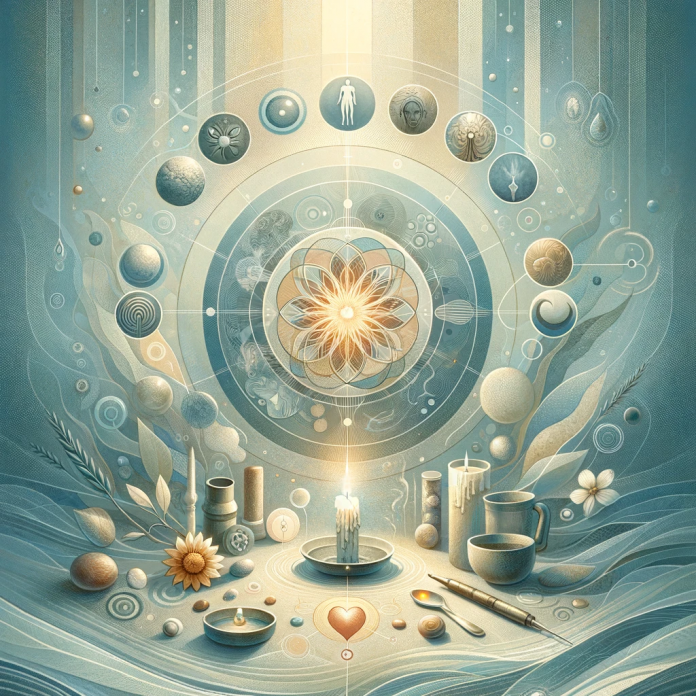Understanding the significance of rituals in the processes of grieving and healing is crucial in our journey towards emotional recovery. These practices, deeply rooted in human culture and psychology, serve as essential tools in navigating the complex landscape of loss and restoration. This exploration delves into the intricate relationship between rituals and the healing process, shedding light on their importance and how they can be effectively utilized.
The Role of Rituals in Grieving
Rituals play an integral role in the grieving process. They provide a structured framework that helps individuals cope with the overwhelming emotions associated with loss. By engaging in rituals, people can express their grief in a tangible way, making the abstract concept of loss more manageable.
Moreover, rituals create a sense of continuity and connection with the deceased. They allow for the acknowledgment of the loss, facilitating the transition from denial to acceptance. This is a critical step in the grieving process, as acceptance paves the way for healing.
Types of Grieving Rituals
There are various types of grieving rituals, each with its unique purpose and significance. Traditional rituals, such as funerals and memorial services, provide a communal space for expressing grief. They allow individuals to share their sorrow, fostering a sense of solidarity and mutual support.
Personal rituals, on the other hand, are intimate practices that individuals engage in privately. These may include visiting the grave of the deceased, keeping a journal of memories, or even talking to a picture of the loved one. Personal rituals offer a safe space for individuals to process their grief at their own pace, promoting self-healing.
The Role of Rituals in Healing
Rituals also play a significant role in the healing process. They provide a sense of control in a situation that often feels chaotic and unpredictable. By engaging in rituals, individuals can regain a sense of order and stability, promoting emotional well-being.
Furthermore, rituals can facilitate the process of letting go. They provide a symbolic means of saying goodbye, helping individuals detach from the pain of loss. This detachment is not about forgetting the loved one, but rather about releasing the anguish associated with their absence.
Types of Healing Rituals
Healing rituals come in various forms, each serving a unique purpose in the healing journey. Some people find solace in spiritual rituals, such as prayer or meditation. These practices can provide a sense of peace and comfort, fostering emotional healing.
Therapeutic rituals, such as art therapy or music therapy, are also effective tools for healing. They allow individuals to express their emotions creatively, facilitating emotional release. This form of expression can be particularly beneficial for those who struggle with verbal communication.
Creating Your Own Rituals
Creating your own rituals can be a powerful way to personalize your grieving and healing process. These rituals should reflect your personal beliefs, values, and emotional needs. They should provide a sense of comfort and solace, helping you navigate your journey towards healing.
When creating your own rituals, consider incorporating elements that hold personal significance. This could be a favorite song, a cherished location, or a meaningful object. The key is to create a ritual that resonates with you on a deep emotional level.
Steps to Create Your Own Rituals
- Identify your emotional needs: Understand what you need to express or release through the ritual. This could be grief, anger, guilt, or any other emotion associated with the loss.
- Choose a significant element: Select an element that holds personal significance. This could be a physical object, a location, a song, or even a scent.
- Design the ritual: Decide on the structure of the ritual. This could involve a series of actions, words, or thoughts. Ensure that the ritual is feasible and comfortable for you.
- Perform the ritual: Engage in the ritual regularly. This could be daily, weekly, or monthly, depending on your comfort level and emotional needs.
Conclusion
Rituals hold a profound significance in the processes of grieving and healing. They provide a structured framework for expressing and processing emotions, fostering emotional recovery. Whether traditional, personal, spiritual, or therapeutic, these practices serve as essential tools in navigating the complex journey of loss and restoration.
Creating your own rituals can further enhance the healing process. By personalizing these practices, you can address your unique emotional needs, promoting self-healing. As you navigate your journey towards healing, remember that it's okay to seek help and take your time. Healing is not a race, but a personal journey that unfolds at its own pace.


-banner.png)





